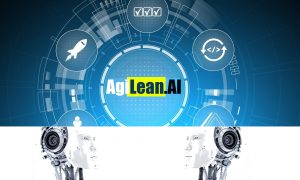
Optimizing Tomorrow: Unleashing the Power of Lean to Evaluate and Ready Your Organization for AI Transformation:
Lean principles, originally developed in the context of manufacturing and process improvement, can be applied to various domains, including AI and data analytics. The goal of applying lean principles in AI is to optimize processes, reduce waste, and improve efficiency. Here’s how lean principles can be utilized in AI for data analytics:
1. Define Value from the Customer’s Perspective: Clearly define the value that AI and data analytics are expected to deliver to the end-users or stakeholders.
Understand the specific requirements and expectations to ensure that the analytics efforts align with the needs of the business.
2. Identify the Value Stream: Map out the entire data analytics process, from data collection to the delivery of insights. Identify and eliminate any non-value-added steps or processes that do not contribute to the end goal.
3. Create Flow: Streamline the flow of data through the analytics pipeline, ensuring a smooth and efficient process.
Minimize delays and interruptions in the data processing and analysis stages.
4. Establish Pull: Allow the demand for insights and analytics to drive the process.
Ensure that data is analyzed and insights are generated based on actual needs, rather than on a predetermined schedule.
Seek Perfection:
Continuously strive for improvement in the data analytics process.
Regularly review and optimize the workflow to eliminate any remaining inefficiencies and waste.
5. Reduce Waste: Identify and eliminate unnecessary steps, duplication of efforts, and any processes that do not contribute directly to value creation.
Optimize data storage, processing, and analysis to minimize resource usage.
6. Implement Automation: Automate repetitive and time-consuming tasks in the data analytics pipeline. Utilize AI and machine learning algorithms to automate data cleansing, feature engineering, and other routine processes.
7. Measure, Monitor and Control: Establish key performance indicators (KPIs) to measure the efficiency and effectiveness of the data analytics process.
Regularly monitor and analyze these metrics to identify areas for improvement.
Implement feedback loops to control deviations from lessons learned and insights gained from previous analytics efforts.
Use feedback to continuously refine and enhance the data analytics process.
By applying lean principles in AI for data analytics, organizations can enhance their ability to derive valuable insights from data while optimizing the efficiency of the entire analytics workflow. This approach promotes adaptability, continuous improvement, and a focus on delivering tangible value to end-users.

